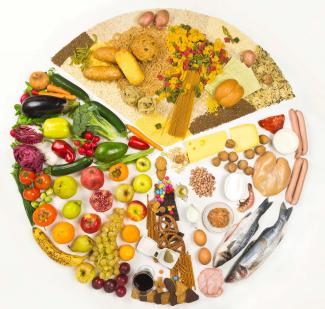Generating variety in your meals

At some point, many of us become convinced that there are only two types of foods, "good" foods and "bad" foods, and to have a healthy diet, you must only eat the "good" foods. First of all, it’s important to know that more than “good” or “bad,” food variety is what helps us to achieve a healthy and balanced diet.
Another common phrase you’ve probably heard is “everything that tastes good is bad for you.” The great news is that there is no such thing as "good" or "bad" foods by themselves, and no food needs to be completely banished from the diet. True healthy eating is when we are able to include all food groups in moderation.
Rule number one for a healthy, balanced meal plan is to explore and enjoy a wide variety of foods around you. “Variety” of foods is the term used to express the nutritional benefits of diversity. Diversity opens the conversation to not only include the array of nutrients found in high-quality diets but also explore the importance of biodiversity—the diversity of plants, animals, and other organisms used for food, both cultivated and from the wild—in our diet patterns.[1]Variety will help you enjoy every meal, as well as allow you to meet your nutrient needs from a range of good food sources.
In order to include variety in your diet, try these ideas:
- Use vibrant colors. Use the rainbow as your inspiration to add eye appeal and choose a different color food each week. Consider trying to eat one new fruit or vegetable each week.
- Think about flavors. Don’t be afraid to use spices and herbs. If you don’t feel so comfortable, consider taking a class on blending herbs and spices, or experiment with some of the seasonings on your rack to enhance your favorite vegetables or protein foods.
- Remember to include foods that are rich in fiber. Plant a new vegetable in your garden and add it to your kabob or stir fry.
- Include a food from a different culture each month.
- Give your meal, snack, soup, or salad some crunch for a variety of texture. Consider incorporating a new crunch, such as toasted chickpeas or dehydrated vegetables.
- Take action today. Retry foods from the past. They may taste different now.
- Each week find a food you are curious about, look up recipes and prepare it.
Now you have some tools available to change the way your plate looks with nutritious foods from all food groups. These are just a few ways of adding variety to your day. The plate that works best is the one that is consumed by you!
